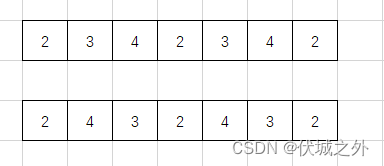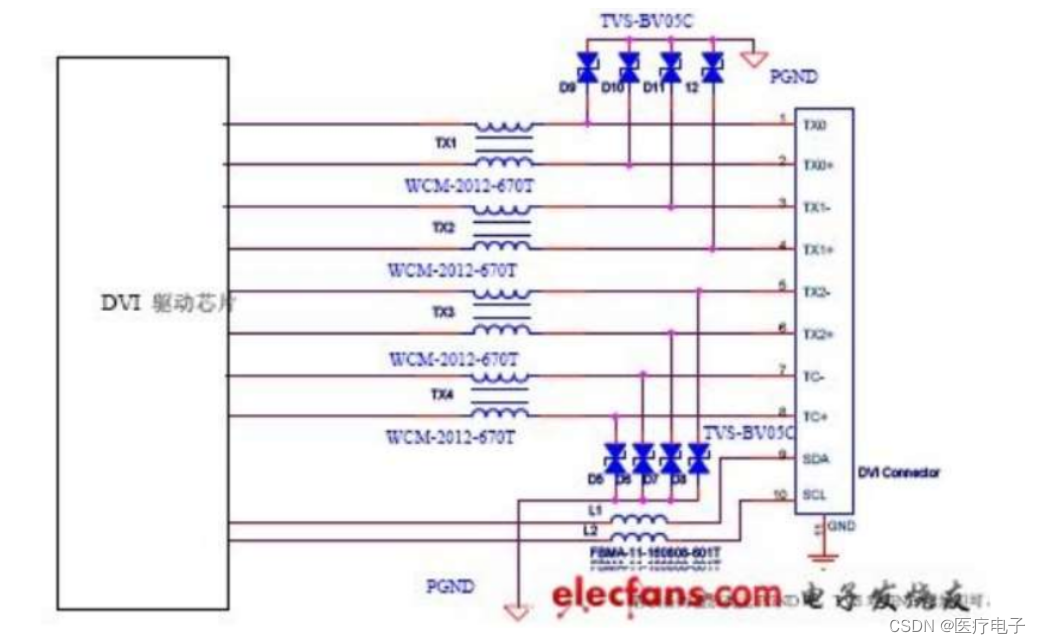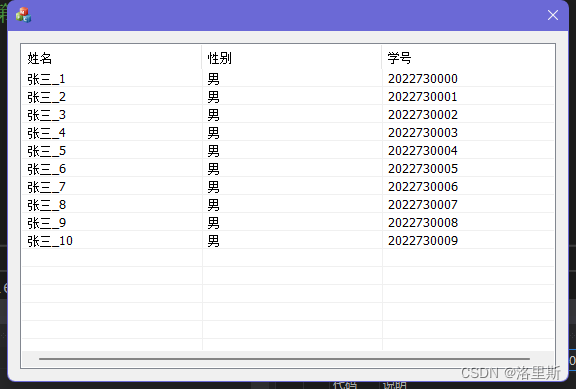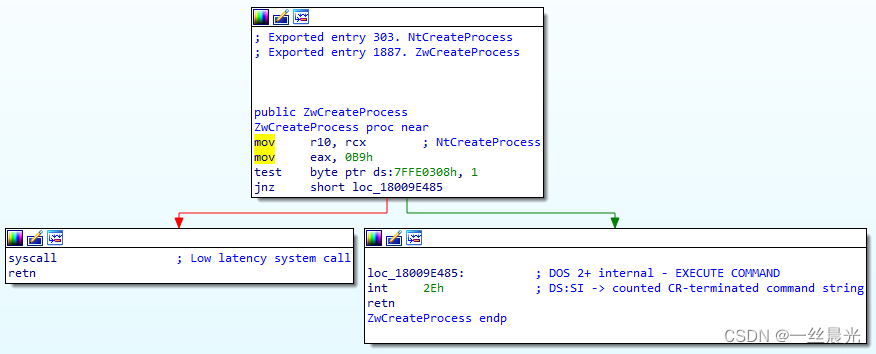文章目录
- 一、前言
- 二、前端代码实现
- 1、效果图
- 年月日倒计时
- 秒杀1天倒计时
- 秒杀60秒倒计时
- 2、代码实操(微信小程序前端)
- ①在utils文件夹下新建js文件:getperiod.js工具类
- ②引入js,在页面index.js开头引入
- ③完整代码
- 3、倒计时实现
- ①1天倒计时实现-完整代码
- ②60秒倒计时实现-完整代码
- 三、java代码实现
- 先简单聊一下
- 为什么建议使用LocalDateTime,而不是Date?
- 使用java8全新的日期和时间API
- Java Date和LocalDateTime之间相互转换
- 简单操作
- 1、效果图
- 2、代码实操
一、前言
做一个记录时间小功能,距离今年结束还剩多少天,这个月还剩多少天,这周过去了多少时间,今天还可以努力几个小时。当然可以通过前端代码实现,也可以通过java来实现,下面我会把完整代码贴出来,以供参考。还有如何使用LocalDateTime。
二、前端代码实现
1、效果图
年月日倒计时
年月日
秒杀1天倒计时
一天倒计时
秒杀60秒倒计时
倒计时60秒
2、代码实操(微信小程序前端)
①在utils文件夹下新建js文件:getperiod.js工具类
class GetPeriod {
constructor() {
this.now = new Date();
this.nowYear = this.now.getYear(); //当前年
this.nowMonth = this.now.getMonth(); //当前月
this.nowDay = this.now.getDate(); //当前日
this.nowDayOfWeek = this.now.getDay(); //今天是本周的第几天
this.nowYear += (this.nowYear < 2000) ? 1900 : 0;
}
//格式化数字
formatNumber(n) {
n = n.toString()
return n[1] ? n : '0' + n
}
//格式化日期
formatDate(date) {
let myyear = date.getFullYear();
let mymonth = date.getMonth() + 1;
let myweekday = date.getDate();
return [myyear, mymonth, myweekday].map(this.formatNumber).join('/');
}
//获取某月的天数
getMonthDays(myMonth) {
let monthStartDate = new Date(this.nowYear, myMonth, 1);
let monthEndDate = new Date(this.nowYear, myMonth + 1, 1);
let days = (monthEndDate - monthStartDate) / (1000 * 60 * 60 * 24);
return days;
}
//获取本季度的开始月份
getQuarterStartMonth() {
let startMonth = 0;
if (this.nowMonth < 3) {
startMonth = 0;
}
if (2 < this.nowMonth && this.nowMonth < 6) {
startMonth = 3;
}
if (5 < this.nowMonth && this.nowMonth < 9) {
startMonth = 6;
}
if (this.nowMonth > 8) {
startMonth = 9;
}
return startMonth;
}
//获取今天的日期
getNowDate() {
return this.formatDate(new Date(this.nowYear, this.nowMonth, this.nowDay));
}
//获取本周的开始日期
getWeekStartDate() {
return this.formatDate(new Date(this.nowYear, this.nowMonth, this.nowDay - this.nowDayOfWeek + 1));
}
//获取本周的结束日期
getWeekEndDate() {
return this.formatDate(new Date(this.nowYear, this.nowMonth, this.nowDay + (6 - this.nowDayOfWeek + 1)));
}
//获取本月的开始日期
getMonthStartDate() {
return this.formatDate(new Date(this.nowYear, this.nowMonth, 1));
}
//获取本月的结束日期
getMonthEndDate() {
return new Date(this.nowYear, this.nowMonth, this.getMonthDays(this.nowMonth));
}
//获取本季度的开始日期
getQuarterStartDate() {
return this.formatDate(new Date(this.nowYear, this.getQuarterStartMonth(), 1));
}
//获取本季度的结束日期
getQuarterEndDate() {
return this.formatDate(new Date(this.nowYear, this.getQuarterStartMonth() + 2, this.getMonthDays(this.getQuarterStartMonth() + 2)));
}
//获取本年的开始日期
getYearStartDate() {
return this.formatDate(new Date(this.nowYear, 0, 1));
}
//获取本年的结束日期
getYearEndDate() {
return new Date(this.nowYear, 11, 31);
}
//获取时段方法
getPeriod(obj) {
let opts = obj || {}, time = null;
opts = {
periodType: opts.periodType || 'now',
spaceType: opts.spaceType || '~'
}
function formatNumber(param1, param2) {
return [param1, param2].join(opts.spaceType);
}
if (opts.periodType == 'week') {
time = formatNumber(this.getWeekStartDate(), this.getWeekEndDate());
} else if (opts.periodType == 'month') {
time = formatNumber(this.getMonthStartDate(), this.getMonthEndDate());
} else if (opts.periodType == 'quarter') {
time = formatNumber(this.getQuarterStartDate(), this.getQuarterEndDate());
} else if (opts.periodType == 'year') {
time = formatNumber(this.getYearStartDate(), this.getYearEndDate());
} else {
time = formatNumber(this.getNowDate(), this.getNowDate());
}
return time;
}
}
module.exports = GetPeriod;
②引入js,在页面index.js开头引入
const GetPeriod = require("../../utils/getperiod.js");
调用方法
new GetPeriod().方法 //即可
③完整代码
index.wxml代码
<view class="container">
<view class="title">倒计时 </view>
<view class="title"> </view>
<view class="top_tip">
<view class="countdown-title">
今年还剩:
<block>
<text class="">{{yearDays}}天</text>
</block>
</view>
<view class="countdown-title">
这个月还可以努力:
<block>
<text class="">{{monthDays}}天</text>
<text>{{ hours }}小时</text>
</block>
</view>
<view class="countdown-title">
这周已经过去了:
<block>
<text class="">{{dayWeek}}天</text>
<text>{{ weekHours }}时</text>
<text>{{ weekMinutes }}分</text>
<text>{{ weekSeconds }}秒</text>
</block>
</view>
<view class="countdown-title">
今天剩余时间:
<block>
<text>{{ hours }}时</text>
<text>{{ minutes }}分</text>
<text>{{ seconds }}秒</text>
</block>
</view>
</view>
</view>
index.js代码
const GetPeriod = require("../../utils/getperiod.js");
Page({
data: {
days: '00', //天
hours: '00', //时
minutes: '00', //分
seconds: '00', //秒
weekHours: '00', //当时
weekMinutes: '00', //当分
weekSeconds: '00', //当秒
dayWeek: '', //周几
monthDays: '00', //天数
yearDays: '00' //年数
},
countTime() {
let days, hours, minutes, seconds, weekDays, weekHours, weekMinutes, weekSeconds, monthDays, yearDays;
let dayWeek = new Date().getDay();
let that = this;
let now = new Date().getTime();
let yearEndDate = new GetPeriod().getYearEndDate().getTime(); //本年结束日期
let monthEndDate = new GetPeriod().getMonthEndDate().getTime(); //本月结束日期
let monthnowDate = new Date(new Date().toLocaleDateString()).getTime(); //当天日期
let end = new Date(new Date().toLocaleDateString()).getTime() + 24 * 60 * 60 * 1000 - 1
let leftTime = end - now; //时间差
let weekLeftTime = now - new Date(new Date().toLocaleDateString()).getTime(); //当天时间
let leftTimes = monthEndDate - monthnowDate; //本月还剩多少天
let leftTimeYear = yearEndDate - monthnowDate; //本月还剩多少天
if (leftTime >= 0) {
days = Math.floor(leftTime / 1000 / 60 / 60 / 24);
monthDays = Math.floor(leftTimes / 1000 / 60 / 60 / 24);
monthDays = monthDays < 10 ? "0" + monthDays : monthDays;
yearDays = Math.floor(leftTimeYear / 1000 / 60 / 60 / 24);
yearDays = yearDays < 10 ? "0" + yearDays : yearDays;
hours = Math.floor(leftTime / 1000 / 60 / 60 % 24);
weekHours = Math.floor(weekLeftTime / 1000 / 60 / 60 % 24);
minutes = Math.floor(leftTime / 1000 / 60 % 60);
weekMinutes = Math.floor(weekLeftTime / 1000 / 60 % 60);
seconds = Math.floor(leftTime / 1000 % 60);
seconds = seconds < 10 ? "0" + seconds : seconds;
weekSeconds = Math.floor(weekLeftTime / 1000 % 60);
weekSeconds = weekSeconds < 10 ? "0" + weekSeconds : weekSeconds;
minutes = minutes < 10 ? "0" + minutes : minutes;
weekMinutes = weekMinutes < 10 ? "0" + weekMinutes : weekMinutes;
hours = hours < 10 ? "0" + hours : hours;
weekHours = weekHours < 10 ? "0" + weekHours : weekHours;
if (dayWeek > 6 || dayWeek == 1) {
dayWeek = dayWeek - 1;
}
that.setData({
dayWeek: dayWeek,
countdown: days + ":" + hours + ":" + minutes + ":" + seconds,
days,
hours,
minutes,
seconds,
weekHours,
weekMinutes,
weekSeconds,
monthDays,
yearDays
})
setTimeout(that.countTime, 1000);
} else {
that.setData({
countdown: '已截止'
})
}
},
onLoad: function (options) {
this.countTime();
},
});
3、倒计时实现
①1天倒计时实现-完整代码
index.wxml代码
<button bindtap='countdown'>{{clock}}</button>
index.js代码
// 定义一个总毫秒数,以一天为例
var total_micro_second = 3600 * 1000*24;//这是一天倒计时
// var total_micro_second = 60 * 1000; //这是60秒倒计时
Page({
/**
* 页面的初始数据
*/
data: {
clock: '1天倒计时效果'
},
/* 毫秒级秒杀倒计时 */
countdown: function () {
var that = this
console.log('countdown=');
// 渲染倒计时时钟
var clock = this.dateformat(total_micro_second) //格式化时间
console.log('clock=' + clock)
that.setData({
clock: clock
});
if (total_micro_second <= 0) {
that.setData({
clock: "秒杀结束"
});
// timeout则跳出递归
return
}
// settimeout实现倒计时效果
setTimeout(function () {
// 放在最后--
total_micro_second -= 10
that.countdown()
}, 10) //注意毫秒的步长受限于系统的时间频率,于是我们精确到0.01s即10ms
},
// 时间格式化输出,如天时分秒 。每10ms都会调用一次
dateformat: function (micro_second) {
// 总秒数
var second = Math.floor(micro_second / 1000);
// 天数
var day = Math.floor(second / 3600 / 24);
// 总小时
var hr = Math.floor(second / 3600);
// 小时位
var hr2 = hr % 24;
// 分钟位
var min = Math.floor((second - hr * 3600) / 60);
// 秒位
var sec = (second - hr * 3600 - min * 60); // equal to => var sec = second % 60;
// 毫秒位,保留2位
var micro_sec = Math.floor((micro_second % 1000) / 10);
// return day + "天" + hr2 + "时" + min + "分" + sec + "秒" + micro_sec;
return hr2 + "时" + min + "分" + sec + "秒" + micro_sec;
},
/**
* 生命周期函数--监听页面加载
*/
onLoad: function (options) {
},
})
②60秒倒计时实现-完整代码
index.wxml代码
<button bindtap='countdown'>{{second}}</button>
index.js代码
Page({
/**
* 页面的初始数据
*/
data: {
second: '60'
},
// 小程序实现简单的倒计时效果
// 基本实现功能:1,从60到0的倒计时效果2,倒计时完毕后会有提示
countdown: function () {
var that = this
var second = this.data.second
if (second == 0) {
that.setData({
second: '倒计时结束'
})
return
}
var time = setTimeout(function () {
that.setData({
second: second - 1
})
that.countdown(that)
}, 1000)
},
/**
* 生命周期函数--监听页面加载
*/
onLoad: function (options) {
},
})
三、java代码实现
先简单聊一下
为什么建议使用LocalDateTime,而不是Date?
而又是为什么需要 LocalDate、LocalTime、LocalDateTime等 Java8 新提供的类
Java 8 中,有一部分代替了以往比较难用的 java.util.Date 类,并且创建了一套新的时间类型,该类为:LocalDateTime ,并且提供了许多方法供我们使用,其中,LocalDate、LocalTime、LocalDateTime是新API里的基础对象,绝大多数操作都是围绕这几个对象来进行的。
LocalDate : 只含年月日的日期对象,对于LocalDate,只有精度大于或等于日的加减,如年、月、日;
LocalTime :只含时分秒的时间对象,对于LocalTime,只有精度小于或等于时的加减,如时、分、秒、纳秒;
LocalDateTime : 同时含有年月日时分秒的日期对象,对于LocalDateTime,则可以进行任意精度的时间相加减;
差异化
Date 如果不格式化,打印出的日期可读性差
Sat Dec 03 10:31:35 CST 2022
使用 SimpleDateFormat对时间进行格式化,但 SimpleDateFormat是线程不安全的 SimpleDateFormat的 format;例如:
SimpleDateFormat sdf = new SimpleDateFormat("yyyy-MM-dd");
Date date=null;
try {
date = sdf.parse(sdf.format(new Date()));
}catch (Exception e){
e.printStackTrace();
}
System.out.println(date);
而方法最终调用代码:
// Called from Format after creating a FieldDelegate
private StringBuffer format(Date date, StringBuffer toAppendTo,
FieldDelegate delegate) {
// Convert input date to time field list
calendar.setTime(date);
boolean useDateFormatSymbols = useDateFormatSymbols();
for (int i = 0; i < compiledPattern.length; ) {
int tag = compiledPattern[i] >>> 8;
int count = compiledPattern[i++] & 0xff;
if (count == 255) {
count = compiledPattern[i++] << 16;
count |= compiledPattern[i++];
}
switch (tag) {
case TAG_QUOTE_ASCII_CHAR:
toAppendTo.append((char)count);
break;
case TAG_QUOTE_CHARS:
toAppendTo.append(compiledPattern, i, count);
i += count;
break;
default:
subFormat(tag, count, delegate, toAppendTo, useDateFormatSymbols);
break;
}
}
return toAppendTo;
}
calendar是共享变量,并且这个共享变量没有做线程安全控制。
当多个线程同时使用相同的 SimpleDateFormat对象【如用 static修饰的 SimpleDateFormat】调用 format
方法时。多个线程会同时调用 calendar.setTime方法,可能一个线程刚设置好 time值,另外的一个线程马上把设置的 time值给修改了,导致返回的格式化时间可能是错误的。
在多线程情况下使用 SimpleDateFormat需格外注意 SimpleDateFormat除了 format是线程不安全以外,parse方法也是线程不安全的。
parse方法实际调用 alb.establish(calendar).getTime()方法来解析,alb.establish (calendar)方法里主要完成了
- 重置日期对象 cal的属性值
- 使用 calb中中属性设置 cal
- 返回设置好的 cal对象
但是这三步不是原子操作,多线程并发如何保证线程安全,避免线程之间共享一个 SimpleDateFormat
对象:
- 每个线程使用时都创建一次 SimpleDateFormat对象 => 创建和销毁对象的开销大
- 对使用 format和 parse方法的地方进行加锁 => 线程阻塞性能差
- 使用 ThreadLocal保证每个线程最多只创建一次 SimpleDateFormat对象 => 较好的方法
Date 对时间处理比较麻烦,比如想获取某年、某月、某星期,以及 n 天以后的时间。
Date 类的确有 getYear、getMonth这些方法,获取年月日很 Easy,但都被弃用了啊
使用java8全新的日期和时间API
LocalDate
只获取年月日
- 创建LocalDate
//获取当前年月日
LocalDate localDate = LocalDate.now();
//构造指定的年月日
LocalDate localDate1 = LocalDate.of(2022, 12, 03);
- 获取年、月、日、星期几
int year = localDate.getYear();
int year1 = localDate.get(ChronoField.YEAR);
Month month = localDate.getMonth();
int month1 = localDate.get(ChronoField.MONTH_OF_YEAR);
int day = localDate.getDayOfMonth();
int day1 = localDate.get(ChronoField.DAY_OF_MONTH);
DayOfWeek dayOfWeek = localDate.getDayOfWeek();
int dayOfWeek1 = localDate.get(ChronoField.DAY_OF_WEEK);
LocalTime
只获取几点几分几秒
- 创建LocalTime
LocalTime localTime = LocalTime.of(14, 50, 10);
LocalTime localTime1 = LocalTime.now();
- 获取时分秒
//获取小时
int hour = localTime.getHour();
int hour1 = localTime.get(ChronoField.HOUR_OF_DAY);
//获取分
int minute = localTime.getMinute();
int minute1 = localTime.get(ChronoField.MINUTE_OF_HOUR);
//获取秒
int second = localTime.getSecond();
int second1 = localTime.get(ChronoField.SECOND_OF_MINUTE);
LocalDateTime
获取年月日时分秒,等于LocalDate+LocalTime
- 创建LocalDateTime
LocalDateTime localDateTime = LocalDateTime.now();
LocalDateTime localDateTime1 = LocalDateTime.of(2022, Month.SEPTEMBER, 10, 14, 50, 10);
LocalDateTime localDateTime2 = LocalDateTime.of(localDate, localTime);
LocalDateTime localDateTime3 = localDate.atTime(localTime);
LocalDateTime localDateTime4 = localTime.atDate(localDate);
- 获取LocalDate
LocalDate localDate2 = localDateTime.toLocalDate();
- 获取LocalTime
LocalTime localTime2 = localDateTime.toLocalTime();
Instant
获取秒数
- 创建Instant对象
Instant instant = Instant.now();
- 获取秒数
long currentSecond = instant.getEpochSecond();
- 获取毫秒数
long currentMilli = instant.toEpochMilli();
如果只是为了获取秒数或者毫秒数,使用System.currentTimeMillis()来得更为方便
修改LocalDate、LocalTime、LocalDateTime、Instant
LocalDate、LocalTime、LocalDateTime、Instant为不可变对象,修改这些对象对象会返回一个副本
- 增加、减少年数、月数、天数等 以LocalDateTime为例
LocalDateTime localDateTime = LocalDateTime.of(2022, Month.SEPTEMBER, 10,
14, 50, 10);
//增加一年
localDateTime = localDateTime.plusYears(1);
localDateTime = localDateTime.plus(1, ChronoUnit.YEARS);
//减少一个月
localDateTime = localDateTime.minusMonths(1);
localDateTime = localDateTime.minus(1, ChronoUnit.MONTHS);
- 通过with修改某些值
//修改年为2020
localDateTime = localDateTime.withYear(2020);
//修改为2023
localDateTime = localDateTime.with(ChronoField.YEAR, 2023);
还可以修改月、日
时间计算
比如有些时候想知道这个月的最后一天是几号、下个周末是几号,通过提供的时间和日期API可以很快得到答案
LocalDate localDate = LocalDate.now();
LocalDate localDate1 = localDate.with(firstDayOfYear());
比如通过firstDayOfYear()返回了当前日期的第一天日期,还有很多方法这里不在举例说明
格式化时间
LocalDate localDate = LocalDate.of(2022, 12, 10);
String s1 = localDate.format(DateTimeFormatter.BASIC_ISO_DATE);
String s2 = localDate.format(DateTimeFormatter.ISO_LOCAL_DATE);
//自定义格式化
DateTimeFormatter dateTimeFormatter = DateTimeFormatter.ofPattern("dd/MM/yyyy");
String s3 = localDate.format(dateTimeFormatter);
DateTimeFormatter默认提供了多种格式化方式,如果默认提供的不能满足要求,可以通过DateTimeFormatter的ofPattern方法创建自定义格式化方式
解析时间
LocalDate localDate1 = LocalDate.parse("20190910", DateTimeFormatter.BASIC_ISO_DATE);
LocalDate localDate2 = LocalDate.parse("2019-09-10", DateTimeFormatter.ISO_LOCAL_DATE);
和SimpleDateFormat相比,DateTimeFormatter是线程安全的。
简单应用
SpringBoot中应用LocalDateTime
- 将LocalDateTime字段以时间戳的方式返回给前端
添加日期转化类
public class LocalDateTimeConverter extends JsonSerializer<LocalDateTime> {
@Override
public void serialize(LocalDateTime value, JsonGenerator gen, SerializerProvider serializers) throws IOException {
gen.writeNumber(value.toInstant(ZoneOffset.of("+8")).toEpochMilli());
}
}
并在LocalDateTime字段上添加@JsonSerialize(using = LocalDateTimeConverter.class)注解,如下:
@JsonSerialize(using = LocalDateTimeConverter.class)
protected LocalDateTime gmtModified;
- 将LocalDateTime字段以指定格式化日期的方式返回给前端
在LocalDateTime字段上添加@JsonFormat(shape=JsonFormat.Shape.STRING, pattern=“yyyy-MM-dd HH:mm:ss”)注解即可,如下:
@JsonFormat(shape=JsonFormat.Shape.STRING, pattern="yyyy-MM-dd HH:mm:ss")
protected LocalDateTime gmtModified;
- 对前端传入的日期进行格式化
在LocalDateTime字段上添加@DateTimeFormat(pattern = “yyyy-MM-dd HH:mm:ss”)注解即可,如下:
@DateTimeFormat(pattern = "yyyy-MM-dd HH:mm:ss")
protected LocalDateTime gmtModified;
Java Date和LocalDateTime之间相互转换
Date转化成LocalDateTime
一种方法
package insping;
import java.time.Instant;
import java.time.LocalDateTime;
import java.time.ZoneId;
import java.util.Date;
public class Test {
public static void main(String[] args) {
Date date = new Date();
Instant instant = date.toInstant();
ZoneId zoneId = ZoneId.systemDefault();
LocalDateTime localDateTime = instant.atZone(zoneId).toLocalDateTime();
System.out.println("Date = " + date);
System.out.println("LocalDateTime = " + localDateTime);
}
}
//输入结果
Date = Sat Dec 03 12:08:56 CST 2022
LocalDateTime = 2022-12-03T12:08:56.121
另一种方法:使用LocalDateTime的FactoryInput()方法使用系统的默认时区。
LocalDateTime localDateTime = LocalDateTime.ofInstant(date.toInstant(), zoneId);
LocalDateTime转化成Date
步骤方法:
1.使用atZone()方法将LocalDateTime转换为ZonedDateTime
2.将ZonedDateTime转换为Instant,并从中获取Date
package insping;
import java.time.LocalDateTime;
import java.time.ZoneId;
import java.time.ZonedDateTime;
import java.util.Date;
public class Test {
public static void main(String[] args) {
ZoneId zoneId = ZoneId.systemDefault();
LocalDateTime localDateTime = LocalDateTime.now();
ZonedDateTime zdt = localDateTime.atZone(zoneId);
Date date = Date.from(zdt.toInstant());
System.out.println("LocalDateTime = " + localDateTime);
System.out.println("Date = " + date);
}
}
//输出结果
LocalDateTime = 2022-12-03T12:11:09.398
Date = Sat Dec 03 12:11:09 CST 2022
简单操作
获取特殊时间
public static void main(String[] args) {
LocalDateTime now = LocalDateTime.now();
DateTimeFormatter fmt = DateTimeFormatter.ofPattern("yyyy-MM-dd HH:mm:ss");
LocalDateTime yearStart = now.with(TemporalAdjusters.firstDayOfYear()).with(LocalTime.MIN);
LocalDateTime yearEnd = now.with(TemporalAdjusters.lastDayOfYear()).with(LocalTime.MAX);
LocalDateTime monthStart = now.with(TemporalAdjusters.firstDayOfMonth()).with(LocalTime.MIN);
LocalDateTime monthEnd = now.with(TemporalAdjusters.lastDayOfMonth()).with(LocalTime.MAX);
int dayOfWeek = now.getDayOfWeek().getValue();
LocalDateTime weekStart = now.minusDays(dayOfWeek - 1).with(LocalTime.MIN);
LocalDateTime weekEnd = now.plusDays(7 - dayOfWeek).with(LocalTime.MAX);
LocalDateTime dayStart = now.with(LocalTime.MIN);
LocalDateTime dayEnd = now.with(LocalTime.MAX);
System.out.println("当前年的开始时间:" + yearStart.format(fmt));
System.out.println("当前年的结束时间:" + yearEnd.format(fmt));
System.out.println("当前月的开始时间:" + monthStart.format(fmt));
System.out.println("当前月的结束时间:" + monthEnd.format(fmt));
System.out.println("当前周的开始时间:" + weekStart.format(fmt));
System.out.println("当前周的结束时间:" + weekEnd.format(fmt));
System.out.println("当天的开始时间:" + dayStart.format(fmt));
System.out.println("当天的结束时间:" + dayEnd.format(fmt));
//获取当前几月几号为 -周几
Integer week = now.getDayOfWeek().getValue();
System.out.println("获取当前周:" + week);
}
比较日期大小
public static void main(String[] args) {
String time1 = "2022-06-26 19:00:00";
DateTimeFormatter dtf2 = DateTimeFormatter.ofPattern("yyyy-MM-dd HH:mm:ss");
LocalDateTime localDateTime = LocalDateTime.parse(time1, dtf2);
System.out.println(localDateTime.isBefore(LocalDateTime.now()));//你的时间在当前时间之前是true
System.out.println(localDateTime.isAfter(LocalDateTime.now()));//在当前时间之后是false
}
计算两个时间的差
//使用LocalDateTime计算两个时间的差
Duration duration = Duration.between(now,end);
long days = duration.toDays(); //相差的天数
long hours = duration.toHours();//相差的小时数
long minutes = duration.toMinutes();//相差的分钟数
long millis = duration.toMillis();//相差毫秒数
long nanos = duration.toNanos();//相差的纳秒数
1、效果图
今年还可以努力:28天
这个月还可以努力:28天4小时
这周已经过去了:1天19小时3分27秒
今天还剩余时间:4小时56分26秒
2、代码实操
java代码,实现动态,只需加个定时任务(1000毫秒调用一次即可)
package com.hn.yuan.common;
import java.time.*;
import java.time.format.DateTimeFormatter;
import java.time.temporal.TemporalAdjusters;
public class test2 {
public static void main(String[] args) {
LocalDateTime now = LocalDateTime.now();
DateTimeFormatter fmt = DateTimeFormatter.ofPattern("yyyy-MM-dd HH:mm:ss");
LocalDateTime yearStart = now.with(TemporalAdjusters.firstDayOfYear()).with(LocalTime.MIN);
LocalDateTime yearEnd = now.with(TemporalAdjusters.lastDayOfYear()).with(LocalTime.MAX);
LocalDateTime monthStart = now.with(TemporalAdjusters.firstDayOfMonth()).with(LocalTime.MIN);
LocalDateTime monthEnd = now.with(TemporalAdjusters.lastDayOfMonth()).with(LocalTime.MAX);
int dayOfWeek = now.getDayOfWeek().getValue();
LocalDateTime weekStart = now.minusDays(dayOfWeek - 1).with(LocalTime.MIN);
LocalDateTime weekEnd = now.plusDays(7 - dayOfWeek).with(LocalTime.MAX);
LocalDateTime dayStart = now.with(LocalTime.MIN);
LocalDateTime dayEnd = now.with(LocalTime.MAX);
System.out.println("当前年的开始时间:" + yearStart.format(fmt));
System.out.println("当前年的结束时间:" + yearEnd.format(fmt));
System.out.println("当前月的开始时间:" + monthStart.format(fmt));
System.out.println("当前月的结束时间:" + monthEnd.format(fmt));
System.out.println("当前周的开始时间:" + weekStart.format(fmt));
System.out.println("当前周的结束时间:" + weekEnd.format(fmt));
System.out.println("当天的开始时间:" + dayStart.format(fmt));
System.out.println("当天的结束时间:" + dayEnd.format(fmt));
Duration duration = Duration.between(now, yearEnd);
long yearDays = duration.toDays(); //本年倒计时的天数
Duration duration2 = Duration.between(now, monthEnd);
long monthDays = duration2.toDays(); //本月倒计时的天数
Duration duration3 = Duration.between(now, weekEnd);
long weekDays = duration3.toDays(); //本周倒计时的天数
Duration duration4 = Duration.between(now, dayEnd);
long dayHours = duration4.toHours();//倒计时的小时数
long dayMinutes = duration4.toMinutes() % 60;//相差的分钟数
long dayMillis = duration4.toMillis() % 60;//相差毫秒数
System.out.println("倒计时");
System.out.println("今年还可以努力:" + yearDays + "天");
System.out.println("这个月还可以努力:" + monthDays + "天" + dayHours + "小时");
System.out.println("这周已经过去了:" + weekDays + "天" + now.getHour() + "小时" + now.getMinute() + "分" + now.getSecond() + "秒");
System.out.println("今天还剩余时间:" + dayHours + "小时" + dayMinutes + "分" + dayMillis + "秒");
}
}
定时任务参考
/**
* Timer也可以指定具体时间执行
* String time = "2022-12-02 12:00:00";
* SimpleDateFormat sdf = new SimpleDateFormat("yyyy-MM-dd HH:mm:ss");
* Date delay = sdf.parse(time);//执行时间
* timer.scheduleAtFixedRate(执行任务, delay, 周期);
*/
public void Ds01() {
// 需要定时执行的任务
TimerTask task = new TimerTask() {
public void run() {
System.out.println("-----定时测试-----");
}
};
// Timer定时器工具
Timer timer = new Timer();
// 延迟(首次执行的时间)
long delay = 0;
// 间隔周期(/毫秒数)
long intevalPeriod = 5 * 1000;
// 立即执行,并且每5秒执行一次
timer.scheduleAtFixedRate(task, delay, intevalPeriod);
}

各位看官》创作不易,点个赞!!!
诸君共勉:万事开头难,只愿肯放弃。
免责声明:本文章仅用于学习参考
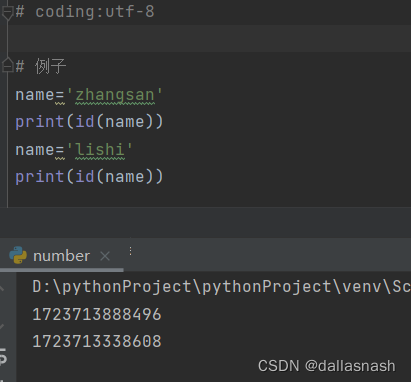
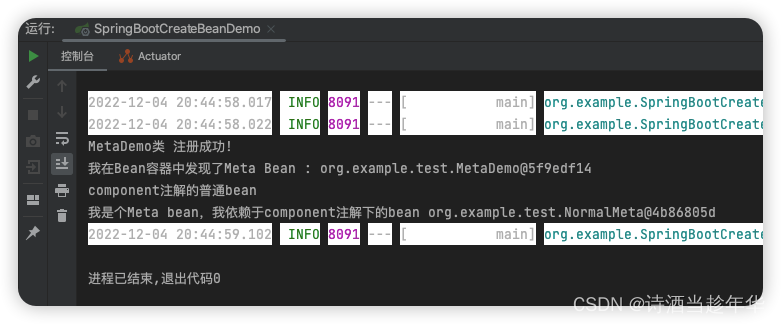


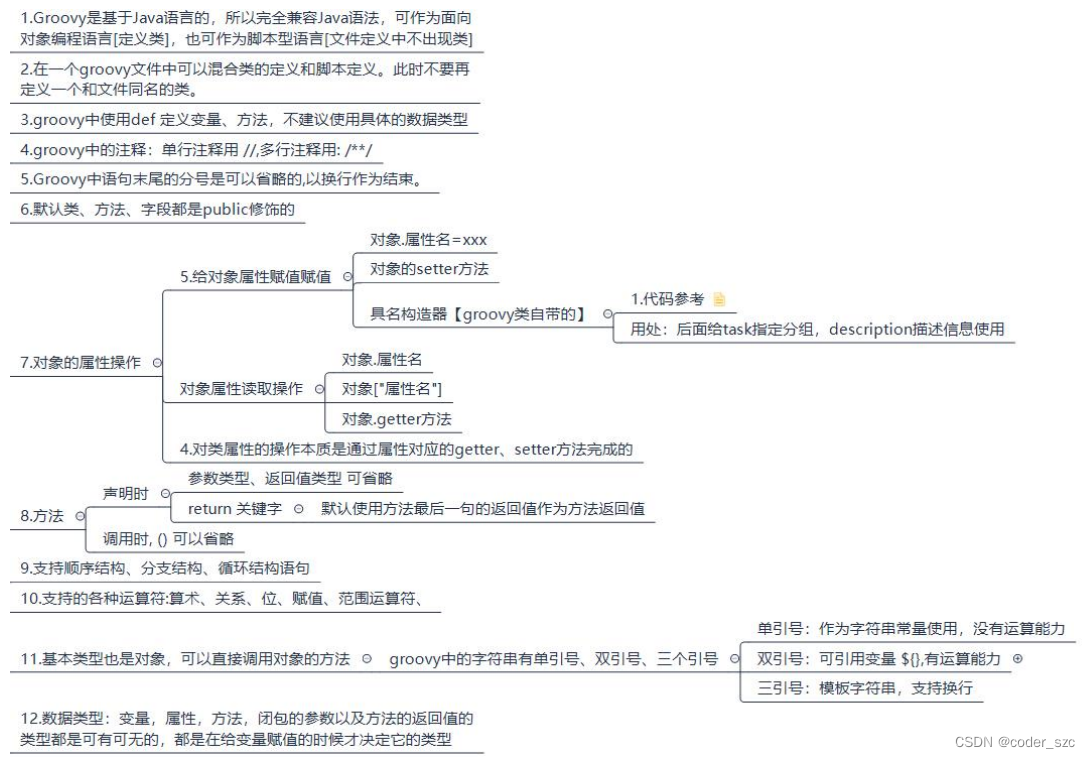
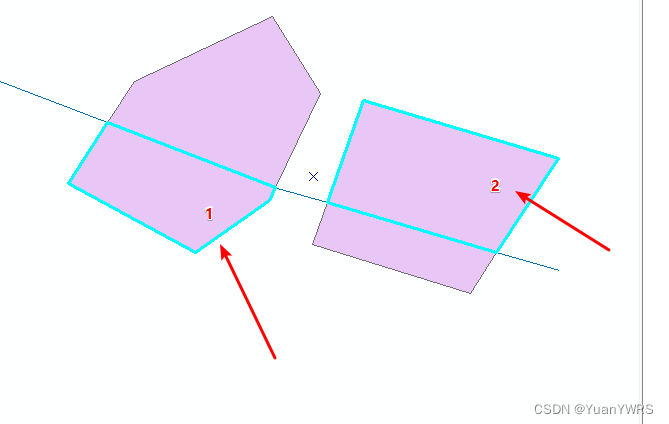

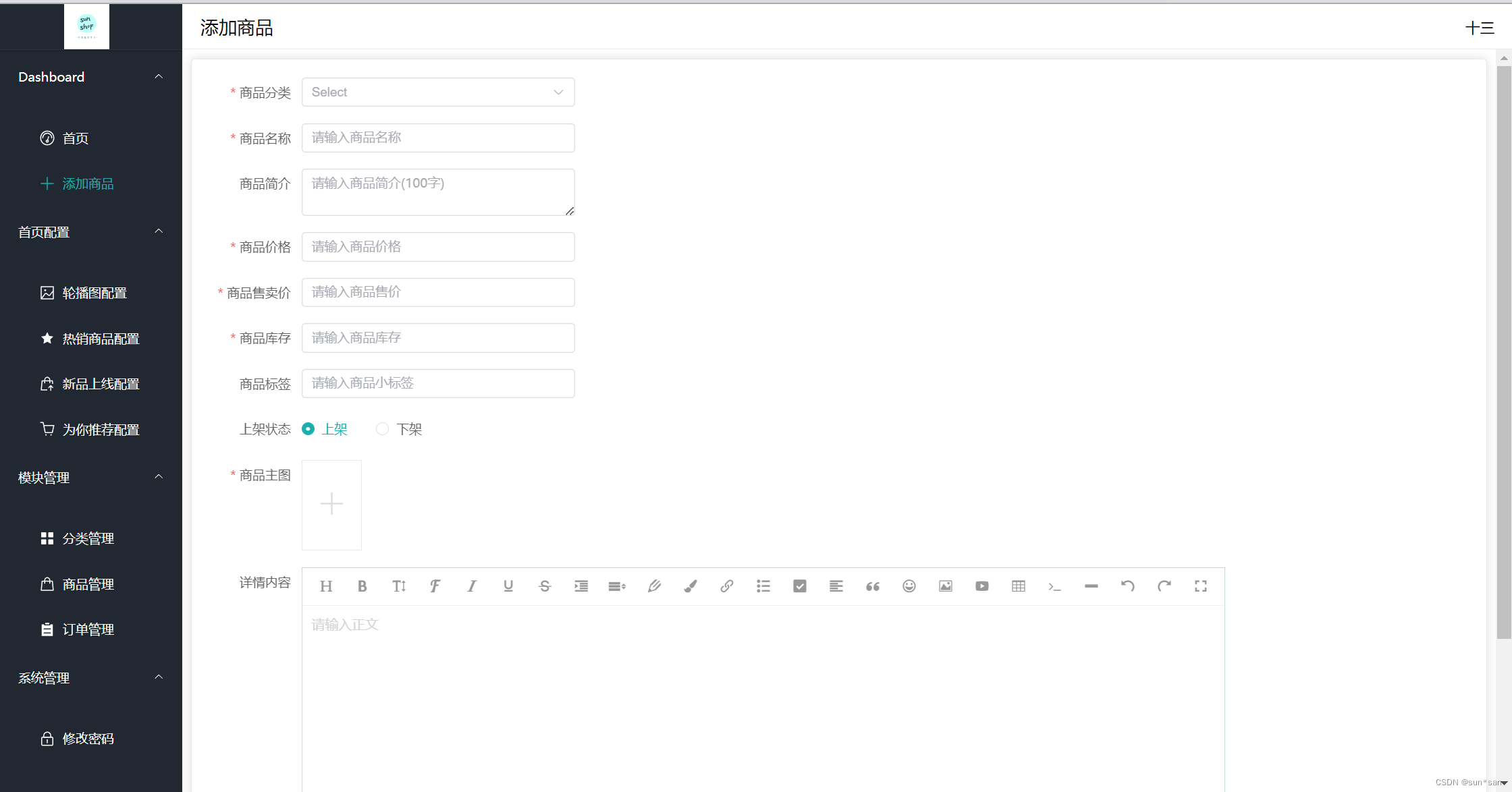
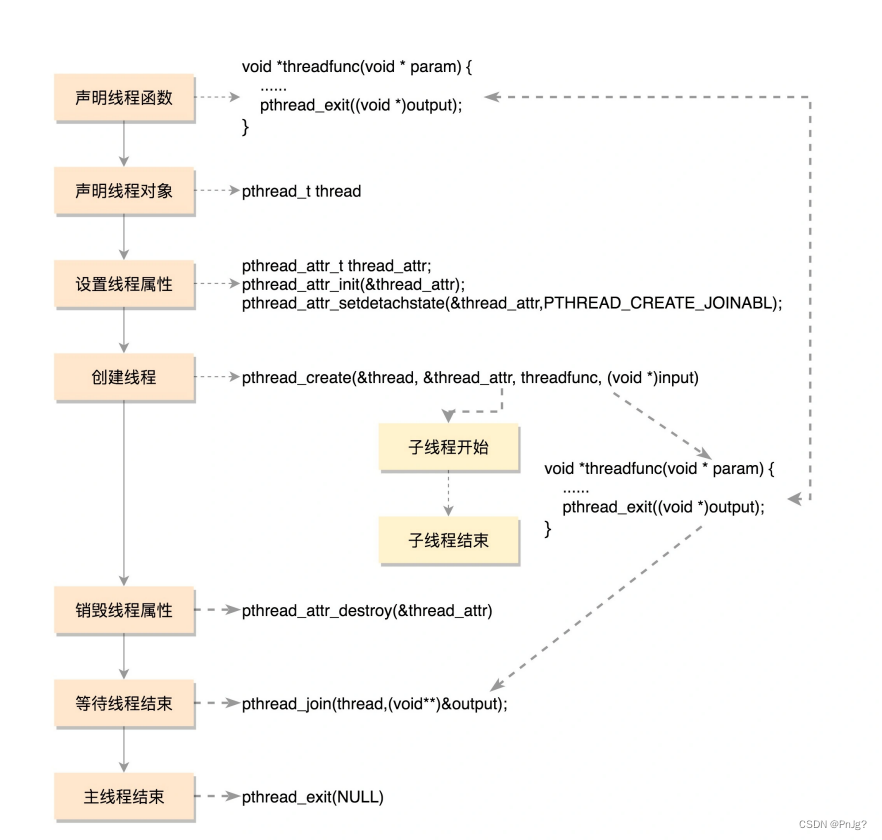

![[附源码]计算机毕业设计物品捎带系统Springboot程序](https://img-blog.csdnimg.cn/29a9ad338f8149a4b08f3c38ca64c1a9.png)



